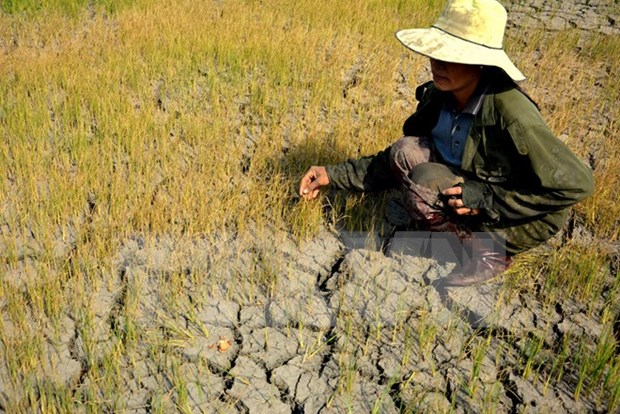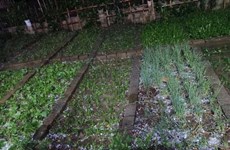Crop planting system to fight drought in south-central region
The Ministry of Agriculture and Rural Development and authorities in drought-hit south-central coastal localities are working to launch several new crop models to cope with a prolonged dry season.
 Illustrative image (Photo:VNA)
Illustrative image (Photo:VNA)Hanoi (VNA) – The Ministry of Agriculture and Rural Development and authorities in drought-hit south-central coastal localities are working to launch several new crop models to cope with a prolonged dry season.
The National Centre for Hydro-meteorological Forecasting said the dry season will continue affecting the region till August, due to the El Nino phenomenon that is causing reduced rainfall.
According to the ministry’s Cultivation Department, measures designed to protect summer-autumn crops this year include cutting the number of crop seasons, rescheduling planting dates, and growing short-term alternative dry-field plants.
Localities lacking a sufficient water-supply capacity are recommended to shift crop seasons or halt cultivation.
Provinces where three seasons of wet-rice cultivation take place annually – Binh Dinh, Ninh Thuan, Binh Thuan and Khanh Hoa – should cut out one season or replace rice crops with vegetables in one or two seasons.
Farmers who cultivate wet-rice crops in two seasons per year in Da Nang, Quang Nam, Quang Ngai and Phu Yen, among others, are recommended to organise planting dates in line with the watering schedules of the local irrigation systems.
Meanwhile, midland and mountainous areas, which utilise small and medium reservoirs and normally face water shortages during the summer-autumn crop season, should follow later than usual planting dates and grow short-term dry-field plants.
Ditch dredging, irrigation infrastructure upgrades, and a tight control of water usage are also must-do recommendations.
According to the Water Resource Directorate, the amount of water stored in reservoirs across the south-central coastal region has now dropped to between 30 and 60 percent of designed capacity due to little rainfall in early 2016. Particularly, the provinces of Khanh Hoa, Ninh Thuan and Binh Thuan have faced acute drought.
Drought has thus far damaged nearly 11,000 ha growing winter-spring crops, including 5,790 ha of rice fields and 3,388 ha of subsidiary-crop areas. The region expects a total cultivation area of over 40,000 ha to be affected by drought in the near future.-VNA













